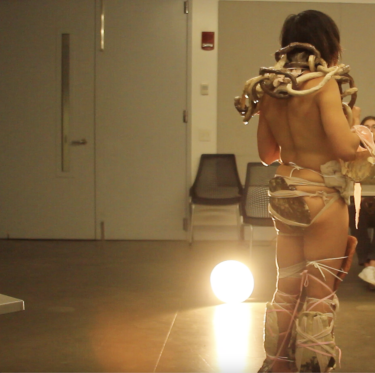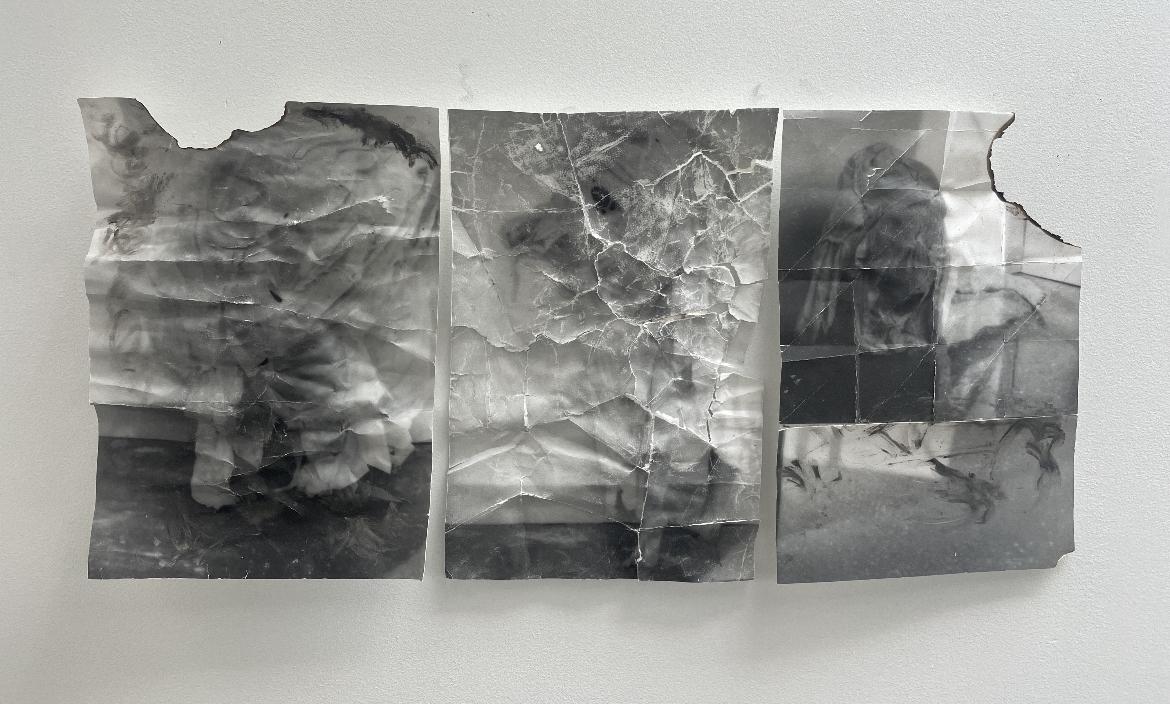CNH
In your work, you said you like to
explore the physical and emotional connotations we attach to
objects that are in relation to the human body. You explained how
the ceramic armor makes weight visible, a weight that is reductive
in the sense that it restricts typical bodily movements. You tried
to explore this restriction through stillness, adopting the status
of object. Given your experience with dance and performance, what
can you share about the differentiation between motion and
stillness? And do you see stillness to be resisting anything in
particular?
TAITAI
When I first started making my own
performance work, I did everyday menial work slowly and created a
narrative about a figure caught and overcome by the materials she
brought to the performance space. I thought that in moving slowly
I gave the stage to those tasks and objects. With my prior
experience as a contemporary-modern dancer, I also thought I was
subverting the hierarchy of the certain codified dance movements I
was trained to do for many years that were seen as more valuable.
In cleaning/
In a
work like A hard baby: You for me and me for You, in
standing still, I was trying to resist my audience from marveling
at my capabilities and training. In general, my decision to move
away from dance movements and perform works that moved the body
slowly, to the aspiration of being still, was to bring my
audiences into a state of introspection and less into a place of
admiration. With that line of thinking, I did consider the context
of the figure was more important to work on. It then became very
important to develop what the body was moving with and not just
how the body was moving. Before my A hard baby performances, I
started with covering my face with materials like bubble wrap. And
in the new piece (A hard baby), the ceramic armor I wore on my
nude body was meant to blur any specific identity markers of my
humanness, in hopes to connect with human audiences (who besides
having bodies like me) I have not shared my life experiences and
identify otherwise.



